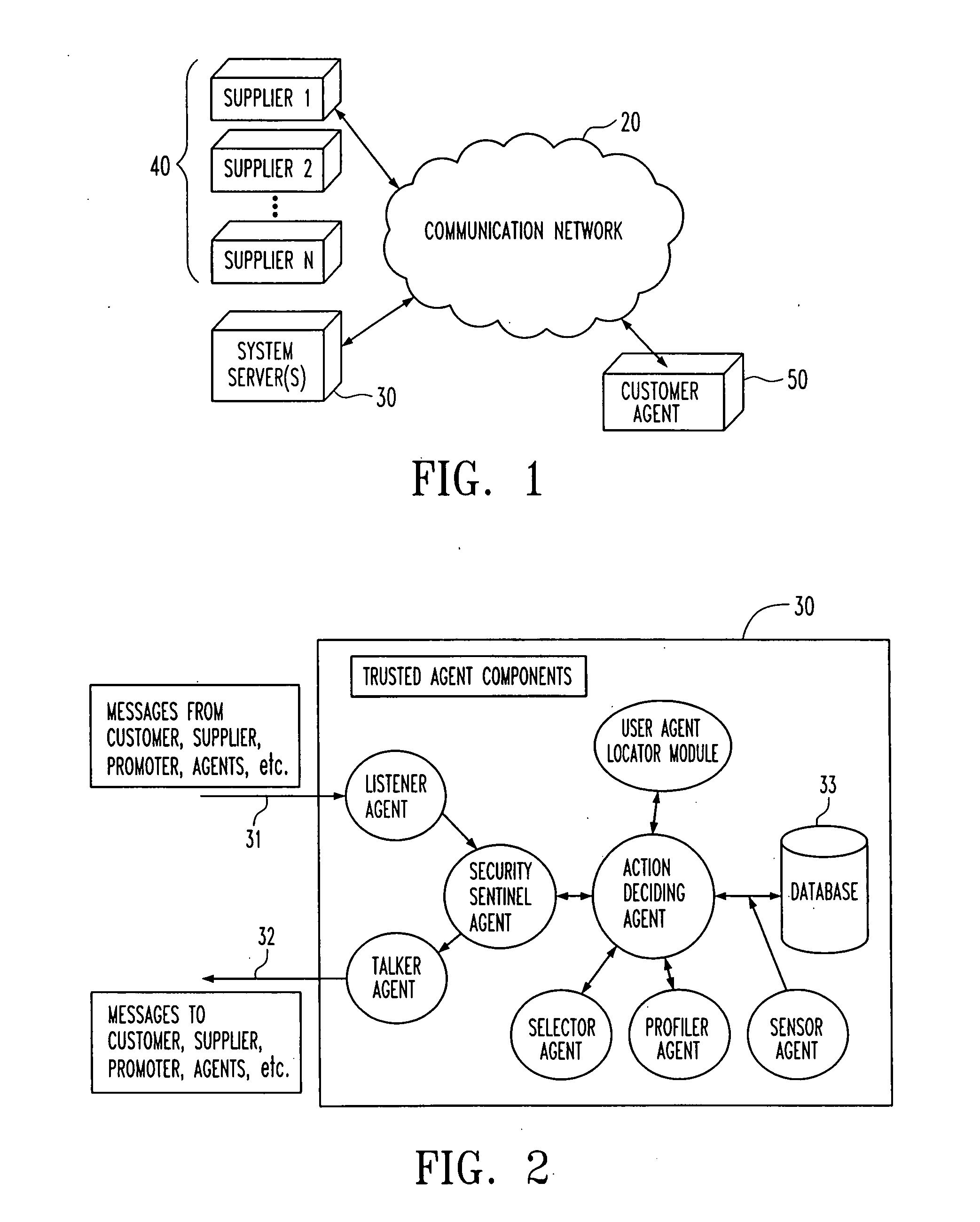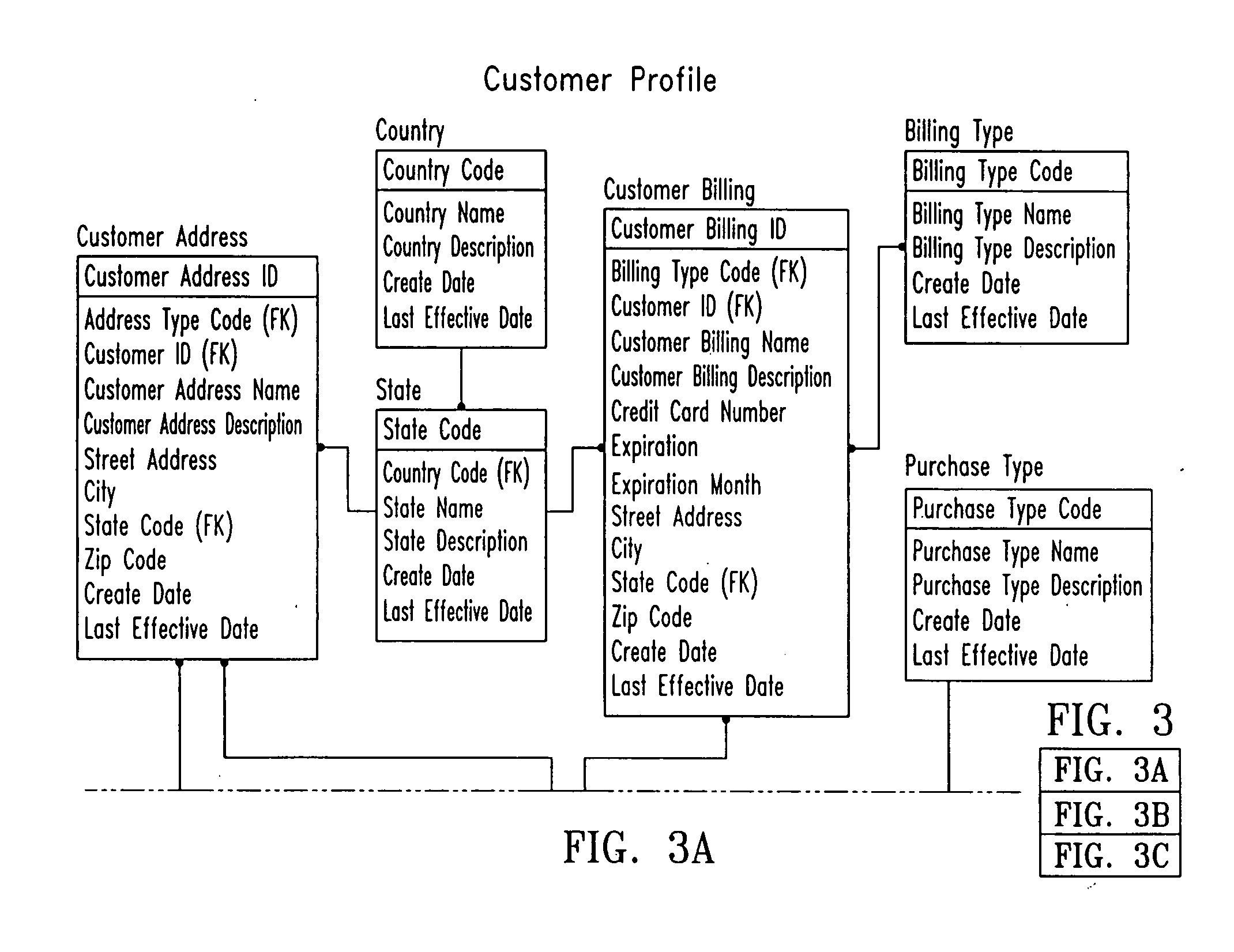Information broker for directing, customizing, exchanging, negotiating, trading and provisioning of information, goods and services in an information network
a technology of information broker and information network, applied in the field of information broker for use in an information system, can solve the problems of limited techniques for marketing and selling goods and services, distributing information to consumers, and avoiding consumers from being aware of the availability of information, goods or services, etc., and achieves the effect of reducing the number of information brokers
- Summary
- Abstract
- Description
- Claims
- Application Information
AI Technical Summary
Benefits of technology
Problems solved by technology
Method used
Image
Examples
example 1
Case when Customer Terminal (e.g. Java Enabled Cell Phone or Personal Computer) is Unavailable or does not Possess Sufficient Resources to Receive Information
[0113] As best seen in FIG. 7 in the normal mode of operation of the system, a message intended for K1 will go to K1 with a copy to HPC for John Doe. K1 will act on the message and send a response to the broker agent on FLC1.
[0114] In the case where the network detects that there are not enough resources such as memory for the customer agent in K1 to complete its task, if the PC is not switched on, the network of this system will route the transaction or event / work to be performed by the trusted agent running in the FLC1 trusted agent. Thus, work is always performed to completion.
example 2
VII. EXAMPLE 2
Case when Cooperating Agents in Different Devices are Used to Complete a Transaction
[0115] As shown in FIG. 8, the trusted agent 70 sends a message (step 1) to John Doe's customer agent 72 running on his car Global Positioning System (“GPS”). The message may be “I have a sample of your favorite band's newest album available for free download”. In the next step (step 2) the automobile mounted customer agent responds “yes / okay to receive sampler”. In the next step (step 3) the trusted agent works out which of the customer's other receiver devices (e.g. laptop, PC), etc, is available to receive the information, since the automobile GPS obviously cannot receive an audio download. Next (step 4), the trusted agent network 70 completes the transmission of the sampler to the home PC or other device which the system is informed is / are available. Finally, John Doe's mobile phone can be messaged (step 5) by the trusted agent that the sampler downloaded successfully to John Doe's...
PUM
 Login to View More
Login to View More Abstract
Description
Claims
Application Information
 Login to View More
Login to View More - R&D
- Intellectual Property
- Life Sciences
- Materials
- Tech Scout
- Unparalleled Data Quality
- Higher Quality Content
- 60% Fewer Hallucinations
Browse by: Latest US Patents, China's latest patents, Technical Efficacy Thesaurus, Application Domain, Technology Topic, Popular Technical Reports.
© 2025 PatSnap. All rights reserved.Legal|Privacy policy|Modern Slavery Act Transparency Statement|Sitemap|About US| Contact US: help@patsnap.com



